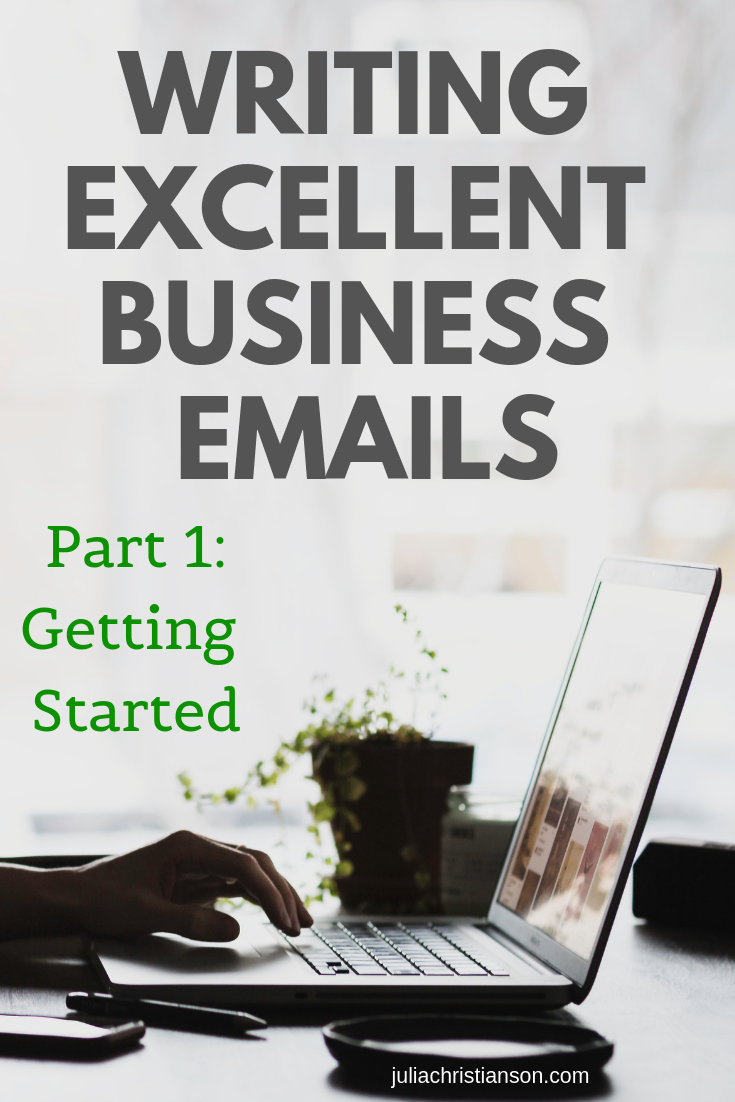
Whether you’ve been working for decades or are just entering the workforce, writing excellent business emails will allow you to communicate clearly, efficiently, and professionally. This three-part series will give you the information you need to hone your skill in writing business emails. This part, part one, deals with the three C’s of writing business emails; the different parts of sending an email; titling your email; greetings; closings; and professional signatures.
The Three C’s
When you are writing business emails, remember the Three C’s: every email you write should be current, complete, and concise.
Current: Send business emails when you need to, without waiting! If you receive an email, do your best to reply within 24 hours, even if you can’t give all the information. If you need more time to collect information or take action, send a brief email to acknowledge receipt of the other’s email and give an estimate of when you’ll be able to respond to it in full.
Complete: Give all the information that is needed in the email, paying close attention to dates, times, numbers, names, email addresses, and actionable items. If the person can’t respond or react because they don’t understand what you need or know your time frame, then you’ve lost time and communication cred.
Concise: Keep your email brief and to the point. Avoid softening phrases such as “I think”, “I feel”, “I hope to”, and other qualifying statements, and instead use “I will”, “I can,” and concrete time frames. Break up paragraphs into bullet point lists for large amounts of data. Keep your focus on the point of the email: what is the information you need to communicate with this email?
Filling the Fields
When you are writing a new email, but before you get to the meat of the message, you need to consider the fields above the place to write the body of the email: namely, the “To”, “CC”, and “BCC” fields. Email auto-dates itself, so you’re good to go.
- The “To” field should have the email address of the main person to get the email; there should not be more than a few email addresses in this field!
- The “CC” field is used to copy people on the email, so that they see it, but it clear that it is not to them directly. This is used when the email address of the person should be seen by the others, for example in an introduction or a group project.
- The “BCC” field is used to show other people the email without the people in the “To” and “CC” fields seeing it. This is useful for sending important information for backup, or in sending an email to a large group of people who should not see each other’s emails. In that case, the “To” can be the same as the “From”, and all other recipients’ addresses should be in the “BCC” field.
Titling the Email
When choosing a title or subject for your email, keep it short and to the point. It should contain important keywords and numbers, but only the absolutely necessary ones. It should only be a few words long, but don’t be vague!
Greetings
Choosing a professional greeting is important. When appropriate and with new contacts always use surnames and titles rather than given names; wait for permission or seeing that the other person signs their emails with their given name before addressing them in that way. Don’t ever address someone by their title and their first name, and always err on the side of formality when you make new contact with people.
- Do not use: Good morning/afternoon/evening, Hey, Heya, Hiya, To whom it may concern, [no greeting]
- Less formal: Greetings, Hello, Hi
- Very formal: Dear Sir/Madam
Closings
Closings give a final feeling after the entire email is done. Several good choices for respectful and businesslike closings include: Best, Best wishes, Regards, Sincerely, Talk to you soon, and Thank you.
Email Signatures
Automatic email signatures can play two roles; they can save time and give a consistent closing to every email, and they can provide useful contact information to recipients. Email signatures can be set up in the email program settings; be aware that they will be attached to every email, so only include what would be appropriate for everyone to see. An email signature often includes some combination of the following: the writer’s name; a cell phone number; an email address; a job title; a website address; a fax number; and sometimes a mailing address.
The recipients, title, opening, closing, and professional signature are all sorted for your excellent business email. Come back on Monday for part two of this series, which will deal with email structure and provide example emails.